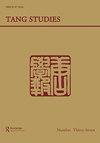The Formation and Reception of a Literary-Pictorial Persona of Li Bai: Reconsidering the So-Called Li Bai Chanting a Poem on a Stroll 李白行吟圖
IF 0.5
0 ASIAN STUDIES
引用次数: 0
Abstract
The so-called Li Bai Chanting a Poem on a Stroll (Fig. 1. 81.1×30.5 cm; Japanese: 李白吟行図; Chinese: 李白行吟圖) by the Southern Song 南宋 (1127–1279) painter, Liang Kai 梁楷 (fl. 12th c.–13th c.), is often reprinted as the illustration for literary or scholarly works about Li Bai 李白 (701–762).1 Indeed, consciously or not, we usually feel comfortable taking the painted figure as Li Bai and accept “chanting a poem on a stroll” as an accurate way to describe the activity represented in the painting. Yet no archival evidence shows that Liang Kai intended to paint Li Bai. This is to say, the Li Bai identity—no matter how widely it is accepted—belongs more to our reception of Li Bai and the painting than to historical fact. This means that the Li Bai identity of the painted figure is subject to debate, and more importantly, raises the question of why the Li Bai identity has been accepted for so long. Moreover, in what ways can this figure’s widely accepted, but actually debatable, identification as Li Bai inspire us to reflect on the reception of Li Bai and his poetry? To date, most studies of the reception of Li Bai and his poetry have focused on how, throughout history, generations of critics have responded to Li Bai’s poetry in writing.2 Art history can inspire us to take another perspective on the李白文学意象人格的形成与接受——对所谓李白漫步吟诗的再思考
所谓李白散步吟诗(图1)。81.1×30.5厘米;日语:南宋画家梁恺(公元12 - 13世纪)所作的《李白》(公元701-762年)的插图经常被重印为有关李白的文学或学术著作的插图的确,我们通常会自觉或不自觉地把画中的人物当作李白,并接受“散步吟诗”作为描绘画中所表现的活动的准确方式。然而,没有档案证据表明梁恺有意画李白。也就是说,李白的身份——不管它被多么广泛地接受——更多地属于我们对李白和这幅画的接受,而不是历史事实。这意味着画中人的李白身份是有争议的,更重要的是,提出了为什么李白身份被接受了这么长时间的问题。此外,这个人物被广泛接受,但实际上有争议的李白身份认同,在哪些方面能启发我们反思对李白及其诗歌的接受?迄今为止,对李白及其诗歌的接受的大多数研究都集中在历史上几代评论家如何在写作中回应李白的诗歌艺术史可以启发我们以另一种视角看待世界
本文章由计算机程序翻译,如有差异,请以英文原文为准。
求助全文
约1分钟内获得全文
求助全文

 求助内容:
求助内容: 应助结果提醒方式:
应助结果提醒方式:


